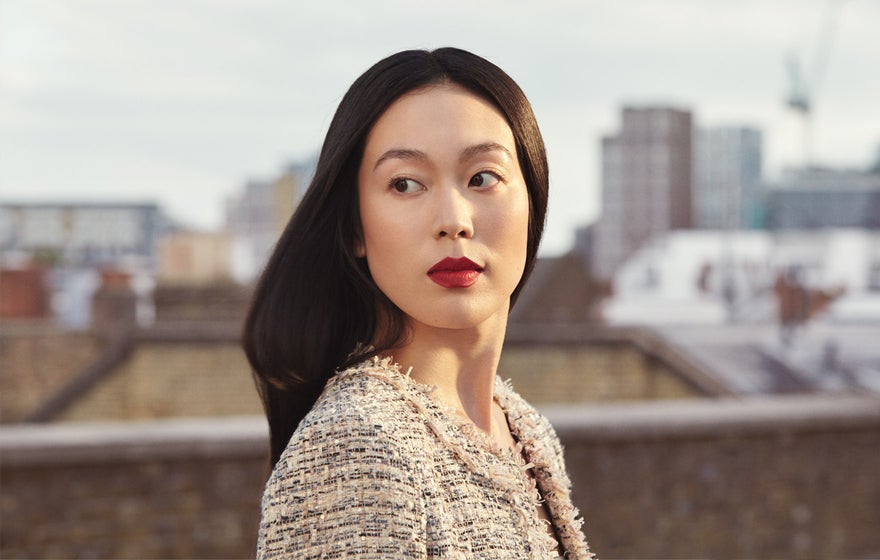
How do you make sure you get the result you want when having an aesthetic treatment? What if you leave the treatment looking odd or not like yourself? If you don’t want to change your facial features or facial proportions, but just want to look fresh and like your best self, how do you make sure that’s what you will get? The answer to these questions is a thorough facial assessment with your healthcare practitioner. Here’s what it entails.
Facial features and facial proportions change as we age
When younger people consider aesthetic treatments, their main goal is often to fix specific facial features or to change their facial proportions. They want, for example, fuller lips, a straighter nose or a more defined jawline. As you get older, things are not so simple any longer. You know that something has happened that makes you look different somehow, compared to when you were younger. But exactly what has happened?
Typically, as we reach our forties and fifties, is a loss of definition. The facial features are not so defined any longer. Even facial proportions start to change due to sagging skin and a loss of facial fat in the cheeks. Facial features and facial proportions also change due to bone resorption, which can be particularly noticeable at the posterior jaw and temples.
For those of us who are not professionals, it can be difficult to understand the underlying changes that have occurred with age. Have our facial features changed due to bone resorption? Or is it loss of facial fat? Or is it the skin, which is the primary culprit, so to speak?
Most of us want to look fresh and not necessarily to look younger
For some of us, these changes don’t bother us at all. For others, they might become a considerable concern. This is reflected in a comment from a participant in a recent survey on aesthetic treatments:
“I want to look in the mirror and feel like I look like myself. Sometimes I look in the mirror and I am like, good God, when did that happen?”
For many people who are considering aesthetic treatments, it’s not about looking younger. They want to look fresh and like themselves. Or, as another participant in the same survey commented:
“My main goal is not even to look younger, but to look like I’ve aged well. I don’t want to look 25. I want to be 41, but a healthy, happy, like she’s aging well 41.”
A qualified healthcare practitioner will make a facial assessment
Maybe you have decided to have some sort of aesthetic treatment to restore your facial features back to when you were more confident about your looks. However, what kind of treatment would be best for you? How will you know? Maybe you have seen pictures of friends and celebrities and think that’s the thing for you too! Or is it? What if you’re wrong and end up with a result that you don’t want?
Fortunately, that risk is minimal as long as you consult a qualified healthcare practitioner. He or she will listen to your concerns and your wishes and personalize the treatment to you. In order to do that, the whole treatment starts with a thorough consultation where your healthcare practitioner makes a facial assessment.
The facial assessment can vary from person to person. Galderma, which specializes in dermatological and aesthetic treatments, has developed a full-face assessment guide, The Five Facets of Natural Beauty, that many healthcare practitioners use. The guide comprises the following important aspects:
Skin quality
For some of us, it’s not so much about restoring facial proportions or achieving more defined facial features. A smoother and more radiant-looking skin will do the trick. A skinbooster treatment could be the optimal treatment. Or perhaps a collagen stimulator that makes your skin firmer.
Facial shape
Your healthcare practitioner will also look at your facial shape. Due to loss of facial fat and bone resorption, this could be the reason you feel your facial features are less defined.
Facial proportions and contour
People of any age might want to change their facial proportions. It could also be an issue that comes with age, due to volume loss in, for example, the cheeks or posterior jaw.
Facial symmetry
None of us is perfectly symmetrical. This can be a concern for people of any age. Facial asymmetries can often be treated with dermal fillers.
Animation and emotional expression
Sometimes, wrinkles can make us look constantly angry or sad or simply not reflect what we really feel. Injectable treatments are often a convenient solution.
In addition to making a facial assessment, your healthcare practitioner will also ask you many questions, perhaps even ask you to fill out a form with your answers. You could be asked to describe your motivations with the treatment, for example:
- I want to appear less tired, younger and refreshed
- I want to feel less self-conscious about my appearance
- I want to feel more confident in my personal and professional relationships
- I want to correct a specific physical feature I don’t like about my face
Based on the assessment of your facial features, and taking your wishes and concerns into account, there’s a high probability you will get the result you desire. You will not leave the treatment looking strange with odd facial proportions. A qualified healthcare practitioner will adapt the treatment to you, to enhance your own unique beauty.
Read also: Make sure you don’t forget to ask these 5 top questions during your consultation